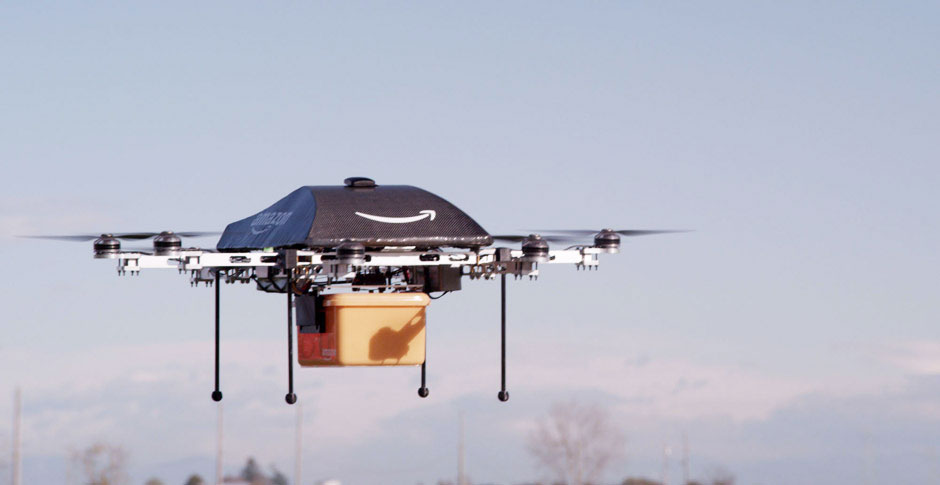
Robohub.org
Amazon Prime Air gets an updated FAA exemption

In a 9-page legal letter, with 28 itemized conditions and limitations, the FAA issued an exemption to Amazon to enable Prime Air to test in US airspace.
The FAA letter, dated April 8th, was filled with pages of legalese, but still limits testing to VLOS (visual line of sight) instead of autonomous flight, and flight controlled by a human operator. Amazon’s drones can not fly faster than 100 miles per hour, fly higher than 400 feet above ground level, and can not weigh more than 55 pounds, according to the letter.
[In February, the FAA provided a very limiting exemption stating that operators would need to see the drone with “unaided vision,” and the drones couldn’t fly over people. As a result of this frustrating situation, Amazon leaked a story of their testing in more accomodating airspace in Canada.]
Interestingly, three insurance giants – AIG, State Farm and USAA – also received FAA exemptions to use drones to observe, catalogue and manage damage caused by natural disasters.
“The potential use of UAS provides us one more innovative tool to help State Farm customers recover from the unexpected as quickly and efficiently as possible,” said Wensley Herbert, a Vice President of Claims at State Farm, in a statement announcing the new regulatory permission.
If you liked this article, you may also be interested in:
- As drone use flourishes, the FAA waivers, and Amazon is forced offshore
- Matternet launches drone delivery platform
- Is package delivery using drones feasible?
- Does the Small UAV industry need its own coalition?
See all the latest robotics news on Robohub, or sign up for our weekly newsletter.
tags: Amazon, c-Aerial, cx-Politics-Law-Society, drone regulations, FAA regulations, Prime Air, USA


